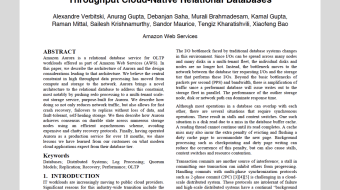Customer-obsessed science


Research areas
-
September 26, 2025To transform scientific domains, foundation models will require physical-constraint satisfaction, uncertainty quantification, and specialized forecasting techniques that overcome data scarcity while maintaining scientific rigor.
-
Featured news
-
Transactions on Machine Learning Research2024Bayesian Optimization (BO) is an effective method for finding the global optimum of expensive black-box functions. However, it is well known that applying BO to high-dimensional optimization problems is challenging. To address this issue, a promising solution is to use a local search strategy that partitions the search domain into local regions with high likelihood of containing the global optimum, and
-
2024We propose an approach for continuous prediction of turn-taking and backchanneling locations in spoken dialogue by fusing a neural acoustic model with a large language model (LLM). Experiments on the Switchboard human-human conversation dataset demonstrate that our approach consistently outperforms the baseline models with single modality. We also develop a novel multi-task instruction fine- tuning strategy
-
CVCI 20242024State of the art methods for anomaly localisation in product images take a patch based approach that models an anomaly patch in an image as an outlier to a distribution of normal image patches. These approaches require the avail-ability of sufficient normal and sometimes even abnormal product images. In this work we present a zero/few-shot anomaly localisation method, where, given an image and a set of
-
2024We introduce a real-time, multichannel speech enhancement algorithm which maintains the spatial cues of stereo recordings including two speech sources. Recognizing that each source has unique spatial information, our method utilizes a dual-path structure, ensuring the spatial cues remain unaffected during enhancement by applying source-specific common-band gain. This method also seamlessly integrates pretrained
-
2024Pitch estimation is an essential step of many speech processing algorithms, including speech coding, synthesis, and enhancement. Recently, pitch estimators based on deep neural networks (DNNs) have been outperforming well-established DSP-based techniques. Unfortunately, these new estimators can be impractical to deploy in real-time systems, both because of their relatively high complexity, and the fact
Collaborations
View allWhether you're a faculty member or student, there are number of ways you can engage with Amazon.
View all














































